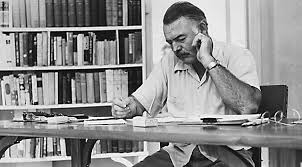image via dailytrojan.com
In his book In Praise of Shadows, Jun'ichirō Tanizaki finds a connection between the prominence of shadows in traditional Japanese architecture and the Japanese literary tradition of which he was a part:
“It is not that Japanese writers have been ignorant of the powers of concision and articulation. Rather, they have felt that certain subjects — the vicissitudes of the emotions, the fleeting perceptions of the mind — are best couched in a style that conveys something of the uncertainty of the mental process and not just its neatly packaged conclusions.”
In Praise of Shadows, p. 45
(Translated by Thomas J. Harper and Edward G. Seidensticker)
We might extend this connection further, from shadows to what might be called blurriness — the quality of images we clearly perceive but do not perceive clearly. My Bloody Valentine’s album Loveless derives much of its power from this principle.
The song “I Only Said” starts with a lead guitar singing like a seagull as it soars over a bruised ocean of guitars, and the roaring blurriness of that ocean (produced by any number of techniques) forces us to confront our unknowing. As a thought experiment, imagine that ocean of guitars replaced by a single acoustic guitar, and how reassuring that acoustic guitar might be by way of its clear sonic image. It’s the unsettling lack of clarity about what we are hearing that gives this album its haunting, mystical power. (Even the album artwork, captured in the video thumbnail, relies on this the power of blurred imagery. We stare at it and see a guitar, but perhaps other things too. The act of puzzling over the image draws us further into it.)
As the vocal enters, the dark ocean of guitars overwhelm it, as if the singer's mouth barely clears the water's surface, the washing of the waves blurring the syllables as they emerge. We lean forward, striving for understanding. Here are the lyrics, according to Google, which can hardly be confirmed by listening.
See there, run away you said to go, you were it, you were it
To lay underneath the red sky there, to lay under her, I want her there
See you there, under her and under to go you were there and I'm slow
To lay over her and I'm slow, to lay under her, I've grown away
The drowned inaudibility of the vocal feels planned, not mistaken. We don't fiddle with our headphones as we listen, though if the vocal were any louder we might because the blur would feel less decisive. Thus, the band has created not a blurry portrait (one we wouldn't know how to encounter) but a portrait of blurriness. We emerge from this sonic ocean without wondering if we listened correctly, only with a deepened awareness of our unknowing.
Thank you for reading.



















